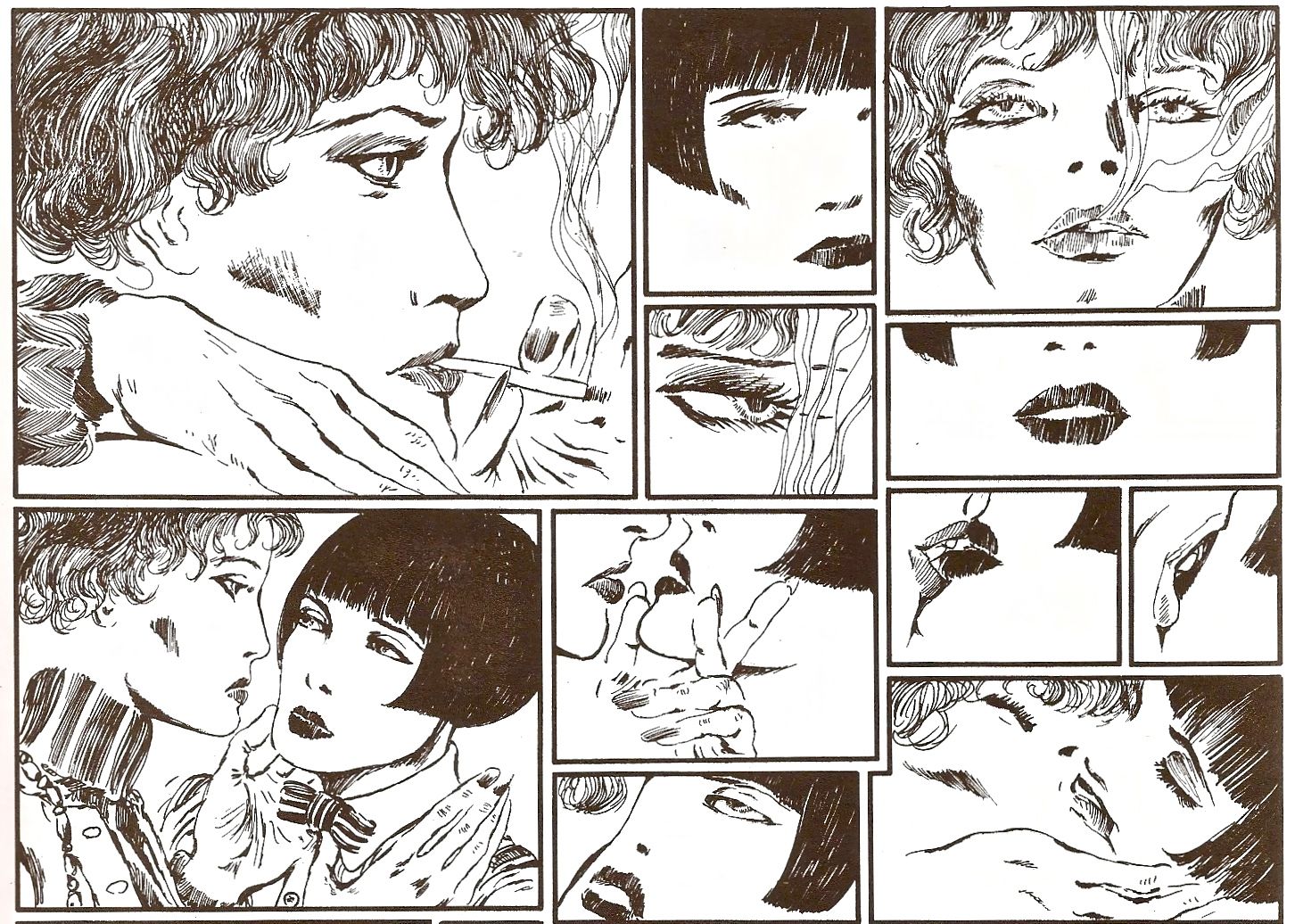Valentina: Magic Lantern (1976), page 17 panels 1-11. Guido Crepax.
On the most basic level, the vast majority of comics are designed to carry information. Panels hold individual units of whatever meaning is being communicated; sequence is there to make sense of them, to display multiple ideas so that the reader can understand them in the order that the artist intends. It's my feeling that comparisons between comics and literature are both overused and rather unproductive, but the two media do share a fundamental goal: imparting information via the reading experience. Though it may be more valuable in the long run to consider comics next to other visual media, the device of sequence itself is perhaps closest to literature, given that it holds the meanings that go beyond the individual pictures, and that accessing it requires a reader's active engagement, as opposed to a viewer's passive reception.
At least, usually it does. While I think the broad classification of "information vehicle" works for a solid 95 percent of comics, it can't be applied hard and fast to the medium as a whole. That's because unlike prose, the visual component of comics is just as strong as the intellectual. Sequential art has traditionally been used as a straightforward, literalist storytelling medium, but it operates on the level of pure image also. Comics can be used to transmit sensation, sense experience, as well as more abstract information. They just usually don't, especially not in sequence. Single panels that hit on the visual level but carry no rhetorical heft are uncommon, but they're hardly impossible to find, even in an issue of Batman. But extended sequences that operate with the goal of touching readers rather than talking to them are pretty rare, and that's why Guido Crepax's comics are so special. Crepax's sequencing is pure sensuality, with everything from overall design to panel content to the intricate spontaneity of his line created in the pursuit of sheer beauty. This alone is uncommon -- how many comics can really be said to place greater importance on pleasantness of effect than some kind of more literal storytelling goal?
In the sequence above, Crepax utilizes the comics storyteller's most reliable tool, the grid, but subverts it with an understated grace as potent as that of his pen strokes. As they're most often laid out, grids work the same way as lines of prose text, moving across the page in straight tiers that read right to left before resuming below to lead the eye along the same path once more. It's an effective, reliable tool for putting across information with comics -- it's easy to follow, and it also places readers, consciously or not, into something of the same headspace as reading prose (which bypasses visual impact and goes straight to the mind) does. Crepax, however, eschews the lockstep, straight-lined march of panel tiers in his grid, instead jumbling the frames together into lazy stretches and sudden bursts. There may or may not be a "correct" order to read this sequence in -- is it across the page four times? or around it in a backwards "C" shape? or some spiralling combination of the two? -- but what matters is that there isn't an immediately apparent one, that the eye is drawn to examine the page on a visual level, to move around inside it and be affected, before it can read anything.
Creapx's work isn't the only place you'll see this approach; Jim Steranko was an early adopter of the technique, and Frank Quitely's also done similar things in his more frenetic moments. But Crepax was the first artist (at least that I know of) to really make a commitment to leaving clarity of reading order out of his sequences. Part of that decision was doubtless purely aesthetic, a fascinating artist pushing his medium somewhere it had never been before. But I think it also must have had something to do with the milieu Crepax worked in: sex comics.
Valentina, Crepax's long-running signature series, began as a mod spy-action comic in a vein that Steranko would rip off wholesale a few years later for his work on Nick Fury, Agent of SHIELD. But as its artist became more and more interested in the erotic life of his female lead, his work began to drift away from diagrammatic, Marvel-style information displays and more toward the kind of abstracted, highly stylized storytelling seen above. This sequencing, which engages with the senses rather than the intellect, defying the logical mind and encouraging the reader to bring their own creativity into play in reading the comic, is as close as Crepax could come to placing his audience inside the sensuous whirl of Valentina's erotic fantasies. We are not observers in this sequence but participants, constructing its reality as we make decisions about which panel should come next, and while that destroys whatever objective information the sequencing may hold, it opens us up to feel around in the drawing, to let our own visual preferences dictate what happens when. Crepax's work is sex comics that manage to be sexier than anything else in their idiom, exhilarating the reader by allowing the eye to act freely in between the panels -- minus the baseness and vulgarity that logically sequenced, processional depictions of sexual acts carry. By making the reader an active participant in the story's motion, by creating a sequence that lacks one objective interpretation, Crepax makes comics that are not information but sensation, a languid visual beauty unmoored from meaning, based only in the what the eyes can pull from what they see.
Next week on Your Wednesday Sequence: Dash Shaw

